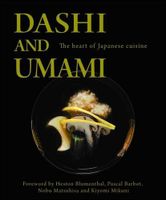🔥 Try our grilling cookbooks and save 25% on ckbk membership with code BBQ25 🔥
Another key fermented seasoning is miso; again, its high umami content is one of its principal attractions. The production process sees rice, barley or soybeans being steamed and inoculated with aspergillus oryzae. The resulting substance, referred to as koji, is added to cooked, crushed soybeans, along with water and salt, and allowed to ferment for up to two years. The resulting paste is high in glutamate and, consequently, umami.
There are a number of types of miso, each of which offer a distinctive taste. The most common is kome miso, rice miso, which is made from soybeans and rice. Mugi miso, made from barley and soybeans, is also popular. Both of these types come in light or dark varieties, depending on the length of fermentation. A variety made entirely from soybeans, called hatcho miso, is rich and dark and is popular in the area around Nagoya in central Japan. As well as being used in miso soup, this paste finds its way into nimono (simmered dishes), nabe (hotpots) and aemono (thickly dressed dishes).
Become a Premium Member to access this page
Unlimited, ad-free access to hundreds of the world’s best cookbooks
Over 160,000 recipes with thousands more added every month
Recommended by leading chefs and food writers
Powerful search filters to match your tastes
Create collections and add reviews or private notes to any recipe
Swipe to browse each cookbook from cover-to-cover
Manage your subscription via the My Membership page
Part of
Advertisement
Related Recipes
-
-
-
-
Related Reference
-
-
-
-
Advertisement


